Estimated reading time: 10 minutes
Ever felt overwhelmed staring at Ableton Live’s interface, wondering how to transform your musical ideas into professional-quality tracks? You’re not alone. Whether you’re a bedroom producer or an aspiring artist, mastering Ableton can seem like climbing a mountain without a map.
But here’s the thing: Ableton Live is more than just a DAW – it’s your gateway to unlimited creative possibilities. From crafting infectious beats to designing unique soundscapes, the right guidance can turn this powerful tool into your musical playground. The secret lies in understanding not just the basics, but the professional workflows that transform good tracks into great ones.
Let’s dive into a comprehensive journey through Ableton Live, covering everything from essential startup skills to advanced production techniques. We’ll explore the core features, workflow optimization, sound design secrets, and project completion strategies that will elevate your music production game.
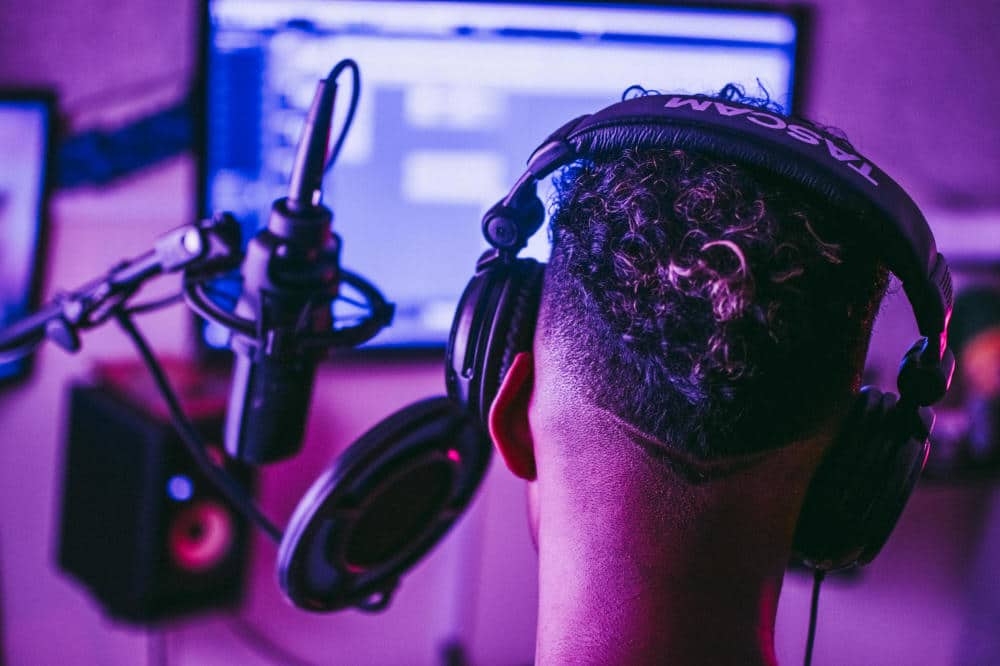
Table of contents
Getting Started with Ableton Live
Essential Hardware Requirements
- Minimum System Requirements:
- 8GB RAM (16GB recommended)
- Multi-core processor
- 5GB free disk space
- Audio interface (recommended)
- MIDI controller (optional)
| Component | Minimum | Recommended |
|---|---|---|
| CPU | Intel® Core i5 | Intel® Core i7/i9 |
| RAM | 8GB | 16GB+ |
| Storage | 5GB SSD | 256GB SSD |
| Display | 1366×768 | 1920×1080 |
Software Installation Guide
- Download Ableton Live from the official website
- Run the installer package
- Follow the setup wizard
- Activate your license
- Install core sound packs
Understanding the Interface Layout
- Session View: Perfect for live performances and improvisation
- Arrangement View: Traditional timeline-based recording and editing
- Browser: Access instruments, effects, and samples
- Mixer: Control levels, panning, and effects routing
Basic Navigation Tips
- Use Tab to toggle between Session and Arrangement views
- Press Space for play/stop
- Hold Shift for fine-tuning parameters
- Use keyboard shortcuts for quick workflow
Now that you’re familiar with Ableton’s foundation, let’s explore the essential production skills you’ll need to create your first track.
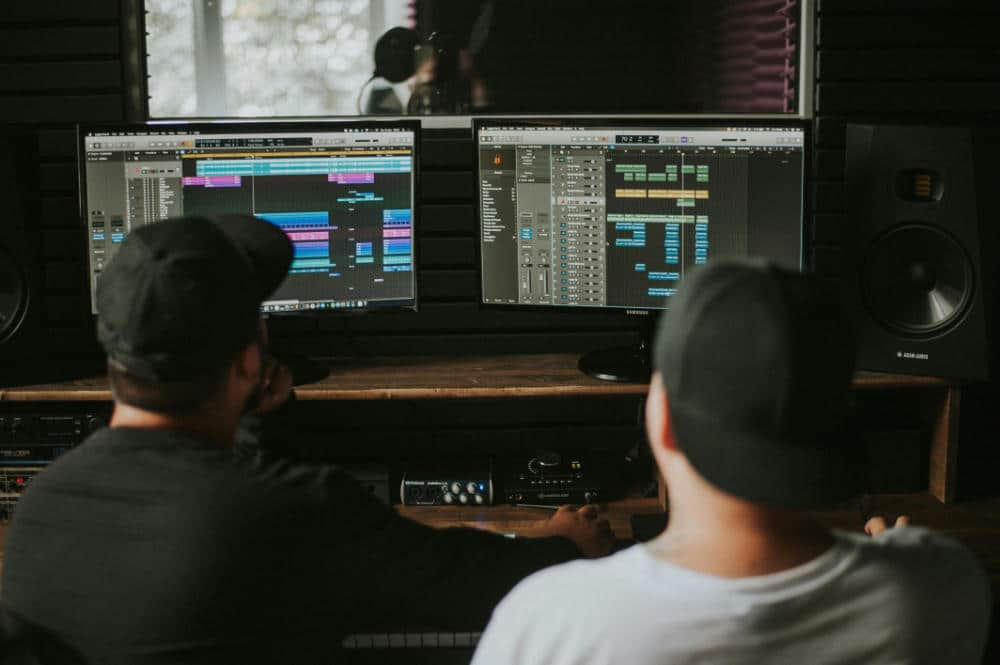
Core Production Skills
Setting Up Your First Project
- Create a new Live Set with appropriate tempo and time signature
- Configure audio preferences and buffer size
- Set up input/output routing for your audio interface
- Organize your browser favorites for quick access
Working with Audio Tracks
- Record live audio using external instruments or microphones
- Import and arrange audio clips
- Apply warping techniques to match tempo
- Use clip envelopes for dynamic control
| Audio Track Features | Purpose |
|---|---|
| Warping Modes | Time-stretch and pitch manipulation |
| Clip Gain | Volume adjustment per clip |
| Track Delay | Timing compensation |
| Input Monitoring | Real-time signal monitoring |
MIDI Recording Fundamentals
- Set up MIDI controllers and mapping
- Record MIDI patterns using the piano roll
- Edit velocity and note timing
- Quantize MIDI notes for rhythm correction
Mixing Basics
- Balance track levels using volume faders
- Apply EQ to shape frequency content
- Use compression for dynamic control
- Create sends/returns for effects processing
Project Organization
- Color-code tracks for visual organization
- Group related tracks
- Use locators for song structure
- Create custom templates for faster workflow
With these core production skills mastered, you’ll be ready to explore Ableton Live’s key production features, including its powerful audio effects and instruments. Understanding these fundamentals ensures a solid foundation for more advanced techniques.
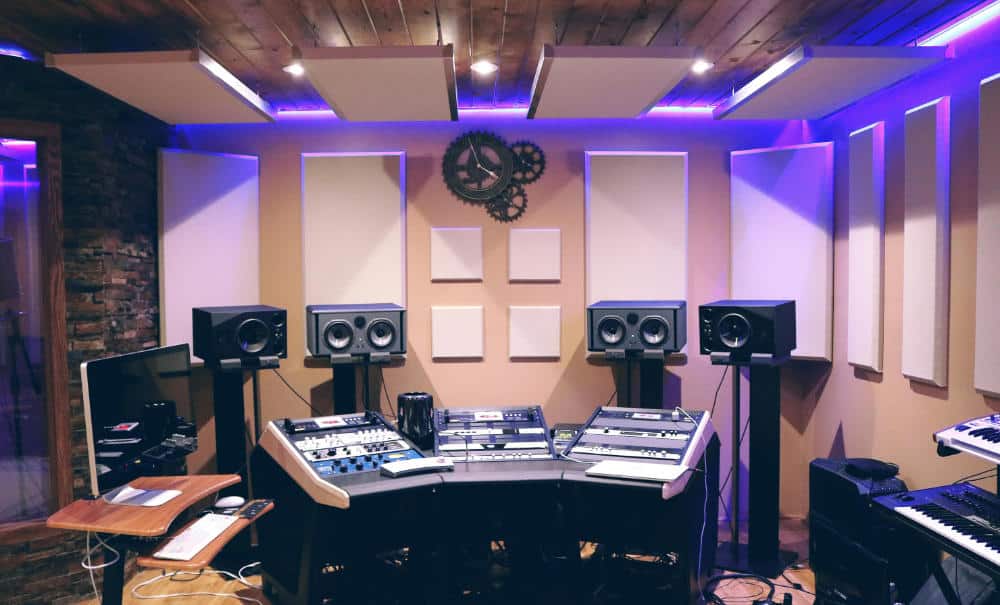
Key Production Features
Using Virtual Instruments
Ableton Live comes packed with an impressive array of virtual instruments that form the backbone of modern music production. The built-in Operator and Wavetable synthesizers offer exceptional sound-shaping capabilities:
- Operator: FM synthesis with up to 4 oscillators
- Wavetable: Advanced spectral synthesis
- Sampler: Professional sampling instrument
- Drum Rack: Versatile percussion organization
Effects Processing
Transform your sounds with Ableton’s professional-grade effects processors:
| Category | Key Effects |
|---|---|
| Dynamics | Compressor, Gate, Limiter |
| Space | Reverb, Delay, Echo |
| Modulation | Chorus, Flanger, Phaser |
| Creative | Beat Repeat, Grain Delay |
Warping and Time Manipulation
Ableton’s warping engine stands as one of its most powerful features, allowing precise control over audio timing and tempo:
- Automatic tempo detection
- Multiple warping modes for different audio types
- Real-time pitch and time manipulation
- Beat slicing and reorganization capabilities
The warping algorithm excels at handling both rhythmic and melodic content, making it invaluable for remixing and sample-based production. Complex warping modes preserve transients while maintaining natural sound quality, even with extreme time stretching.
Now that you’ve mastered these essential production features, let’s explore advanced workflow techniques that will speed up your creative process.
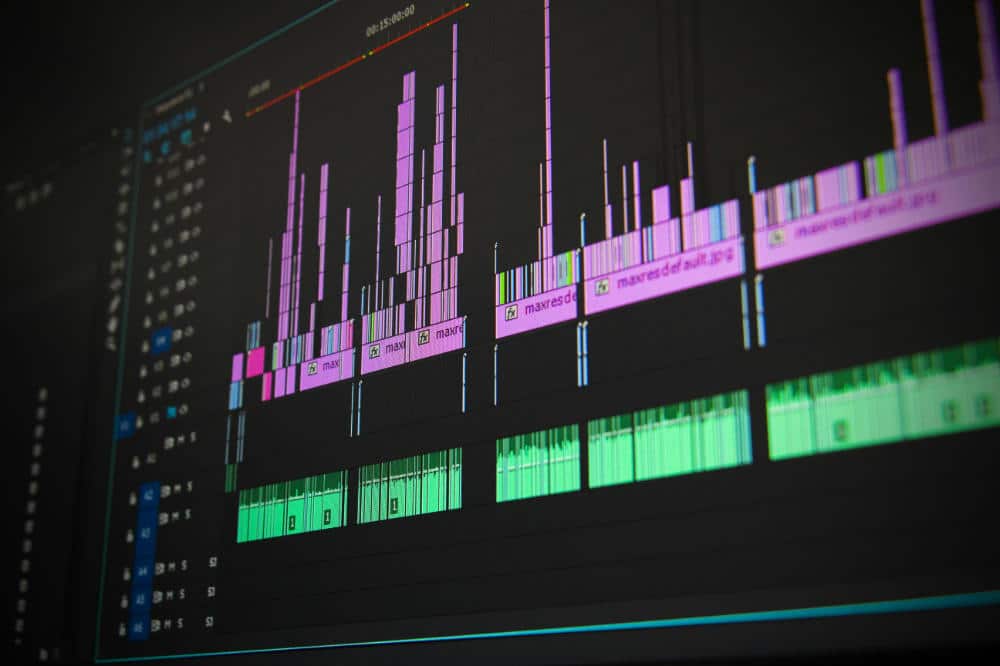
Advanced Workflow Techniques
Session vs. Arrangement View
The dual-view system in Ableton Live offers unique advantages for different production stages:
| Feature | Session View | Arrangement View |
|---|---|---|
| Purpose | Live performance, idea sketching | Linear song arrangement, final production |
| Workflow | Loop-based, non-linear | Timeline-based, linear |
| Best For | Experimentation, live sets | Song completion, mixing |
Live Performance Setup
Create performance-ready sets with these essential steps:
- Configure launch quantization for precise clip timing
- Set up follow actions for automated clip triggering
- Organize tracks with color coding and grouping
- Create custom effect racks for live manipulation
Automation Techniques
Master automation to bring life to your productions:
- Draw precise parameter changes
- Record real-time modulation
- Utilize macro controls for complex parameter changes
- Implement follow actions for dynamic arrangements
Custom Mapping Controls
Personalize your workflow with custom MIDI mappings:
- Assign essential parameters to hardware controllers
- Create multi-layered macro controls
- Design custom effect racks with mapped parameters
- Save mapping templates for future projects
Now that you’ve mastered advanced workflow techniques, let’s explore the realm of sound design to elevate your productions to the next level.
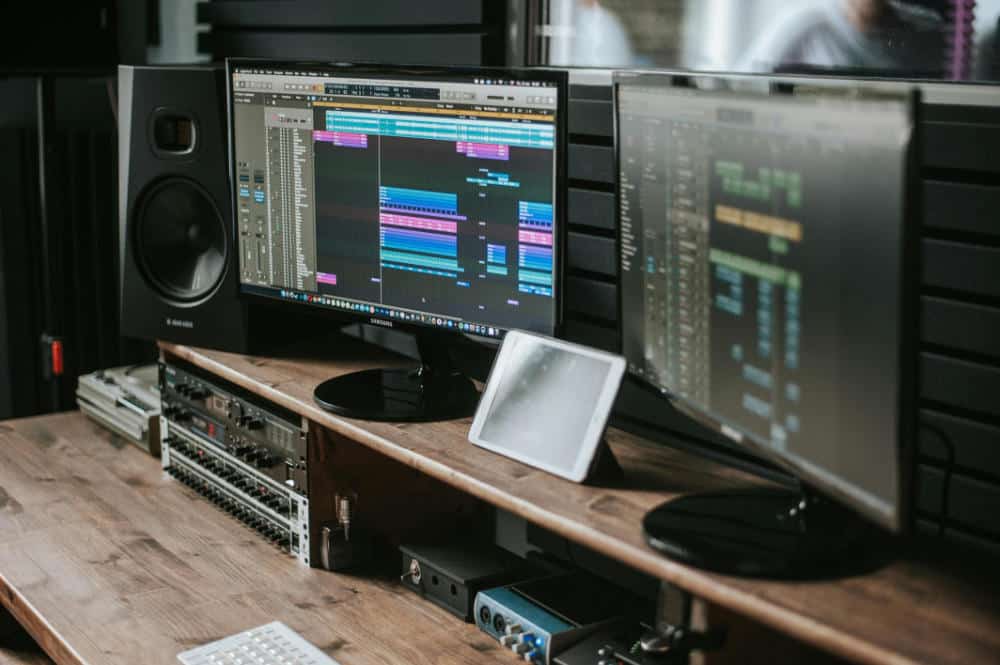
Sound Design Mastery
Synthesizer Programming
Mastering synthesizer programming in Ableton Live opens up endless sonic possibilities. Start with Ableton’s native instruments like Wavetable and Analog to create unique sounds from scratch. Here’s a fundamental approach to synthesis:
| Parameter | Purpose | Impact |
|---|---|---|
| Oscillators | Sound source | Defines basic timbre |
| Filters | Sound shaping | Controls harmonic content |
| Envelopes | Dynamic control | Shapes sound over time |
| LFOs | Modulation | Adds movement and interest |
Sample Manipulation
Transform existing audio into entirely new sounds using these essential techniques:
- Warping and time-stretching for rhythmic manipulation
- Granular synthesis using Simpler and Sampler
- Creative use of audio effects chains
- Resampling processed sounds for further manipulation
Creating Custom Instruments
Combine synthesis and sampling to build unique instruments in Instrument Racks:
- Layer multiple synths and samples
- Map macro controls for real-time manipulation
- Use velocity zones for dynamic response
- Implement effect racks for sound processing
Think of your custom instruments as signature sound designs that set your music apart. Experiment with parallel processing and creative routing to develop complex, evolving textures. With these sound design fundamentals mastered, you’ll be ready to explore advanced workflow techniques for completing your projects efficiently.
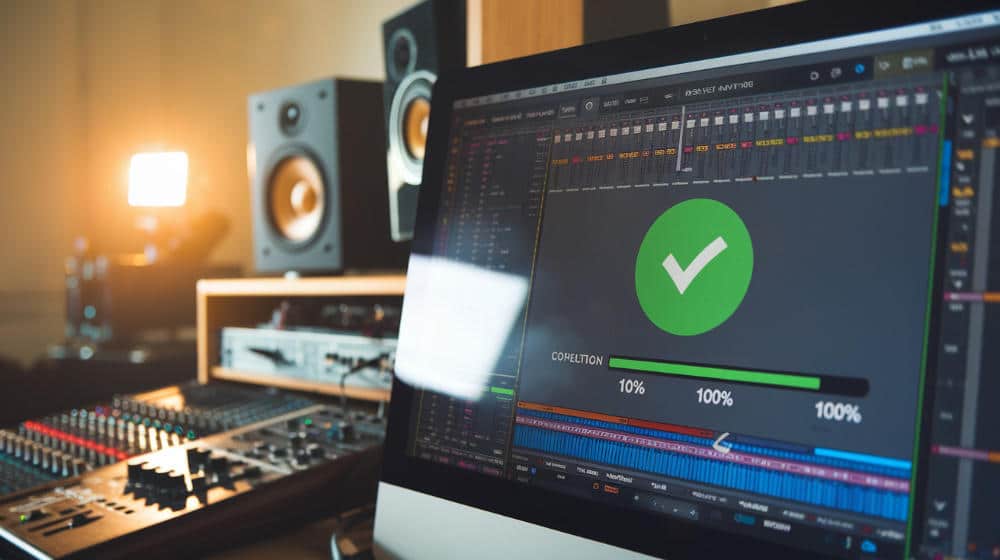
Project Completion Skills
Arrangement Strategies
Professional music production requires strategic arrangement decisions. Here’s a comprehensive approach to finalizing your tracks:
- Establish clear sections (intro, verse, chorus, bridge, outro)
- Create tension and release through energy mapping
- Use automation to maintain listener interest
- Implement effective transitions between sections
Professional Mixing Techniques
A polished mix is crucial for professional-quality productions. Key mixing elements include:
| Technique | Purpose | Implementation |
|---|---|---|
| EQ | Frequency separation | Cut competing frequencies, boost sweet spots |
| Compression | Dynamic control | Maintain consistent levels, add punch |
| Reverb/Delay | Spatial depth | Create depth and dimension in the mix |
| Stereo imaging | Width control | Balance elements across the stereo field |
Export Options
Ableton Live offers various export configurations:
- Rendered audio file formats (WAV, AIFF, MP3)
- Bit depth and sample rate options
- Stem exports for collaboration
- Normalization settings
Backup and File Management
Protect your work with proper file management:
- Create regular project backups
- Organize samples and presets systematically
- Use the “Collect All and Save” feature
- Maintain version control for different project iterations
Now that your production skills are complete, you’re ready to create professional-quality music using Ableton Live’s comprehensive toolset.

Learning Ableton Live is a transformative journey that equips you with essential skills for modern music production. From foundational concepts to advanced techniques, mastering this powerful DAW opens up endless creative possibilities in sound design, production workflow, and project completion.
Take the first step in your music production journey today by enrolling in an Ableton course. Whether you’re a beginner or looking to enhance your existing skills, investing in proper education will accelerate your growth and help you create the music you’ve always imagined. Your next hit track awaits – start learning now.
Video: Learn Ableton Live 11 – FULL COURSE (Beginners)
Conclusion
Mastering Ableton Live isn’t just about learning a tool—it’s about unlocking your creative potential and bringing your musical vision to life. Whether you’re just starting out or refining your production techniques, this course offers the roadmap you need to elevate your music to professional standards. Ready to take your tracks to the next level? Dive in and let Ableton be the bridge between your ideas and the music world.
Related Posts
FAQs
Ableton Live is a powerful digital audio workstation (DAW) used by music producers worldwide. It offers creative tools for composing, recording, and editing music. Learning Ableton Live allows you to turn your ideas into professional tracks, harnessing its unique features for both live performances and in-studio production
For the best experience, a computer with a multi-core processor (Intel Core i5 minimum, i7 recommended), 8GB RAM (16GB recommended), and at least 5GB of free disk space is advised. An audio interface and MIDI controller are optional but can significantly improve your workflow and sound quality.
The course covers Ableton’s main features, including Session and Arrangement views, MIDI and audio recording, mixing, warping, and effects processing. You’ll gain foundational skills to start producing music, along with advanced techniques for workflow efficiency and sound design mastery.
Warping in Ableton allows precise control over audio timing and tempo, which is essential for remixing and syncing audio to a beat. Different warping modes are available for various audio types, letting you experiment with time-stretching, pitch adjustments, and even beat slicing for creative projects.
An Ableton course provides structured guidance through the DAW’s complex features, helping you build a solid foundation and advanced skills. With expert tips, workflow optimization techniques, and hands-on projects, the course accelerates your learning, ensuring you produce professional-quality music faster.
